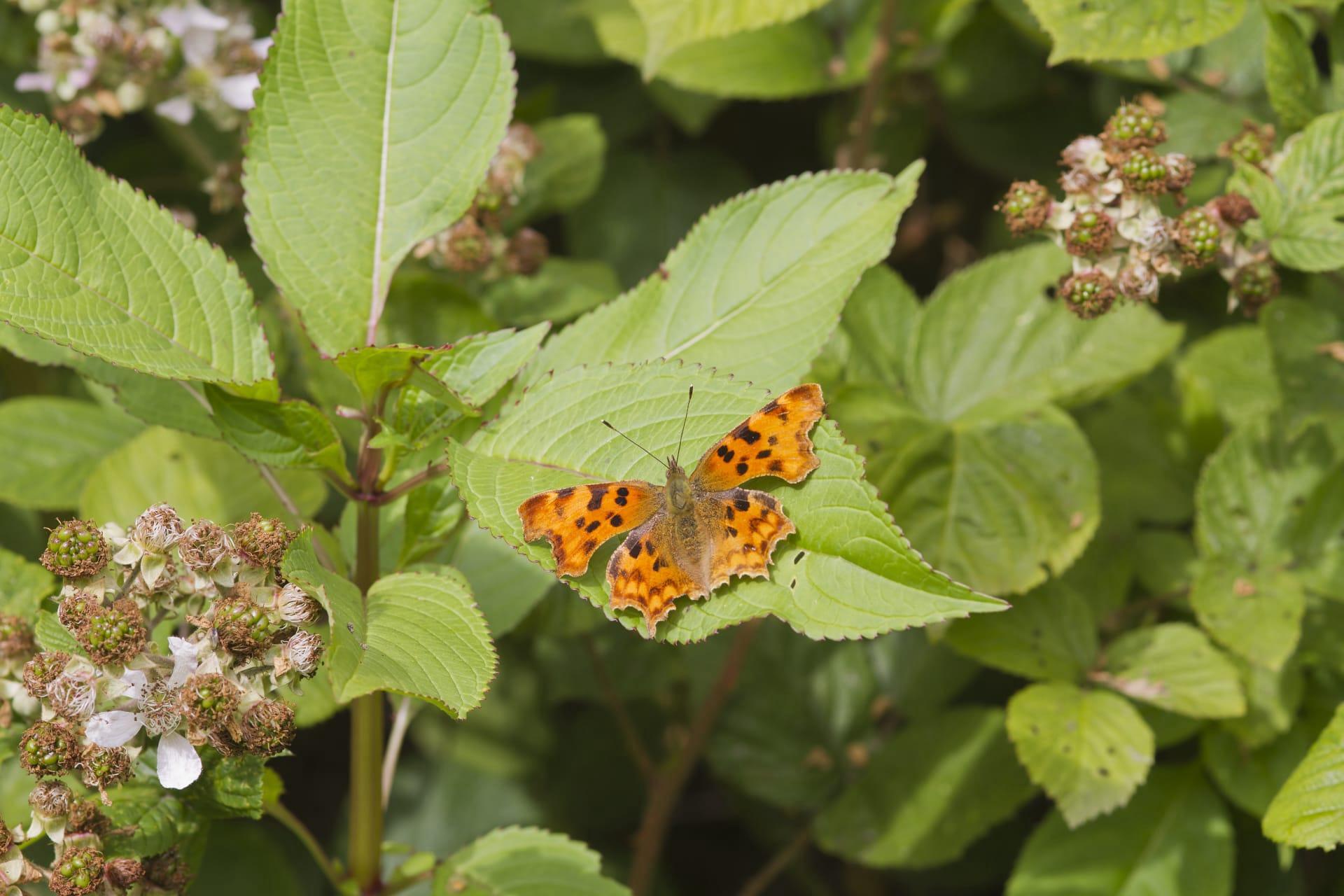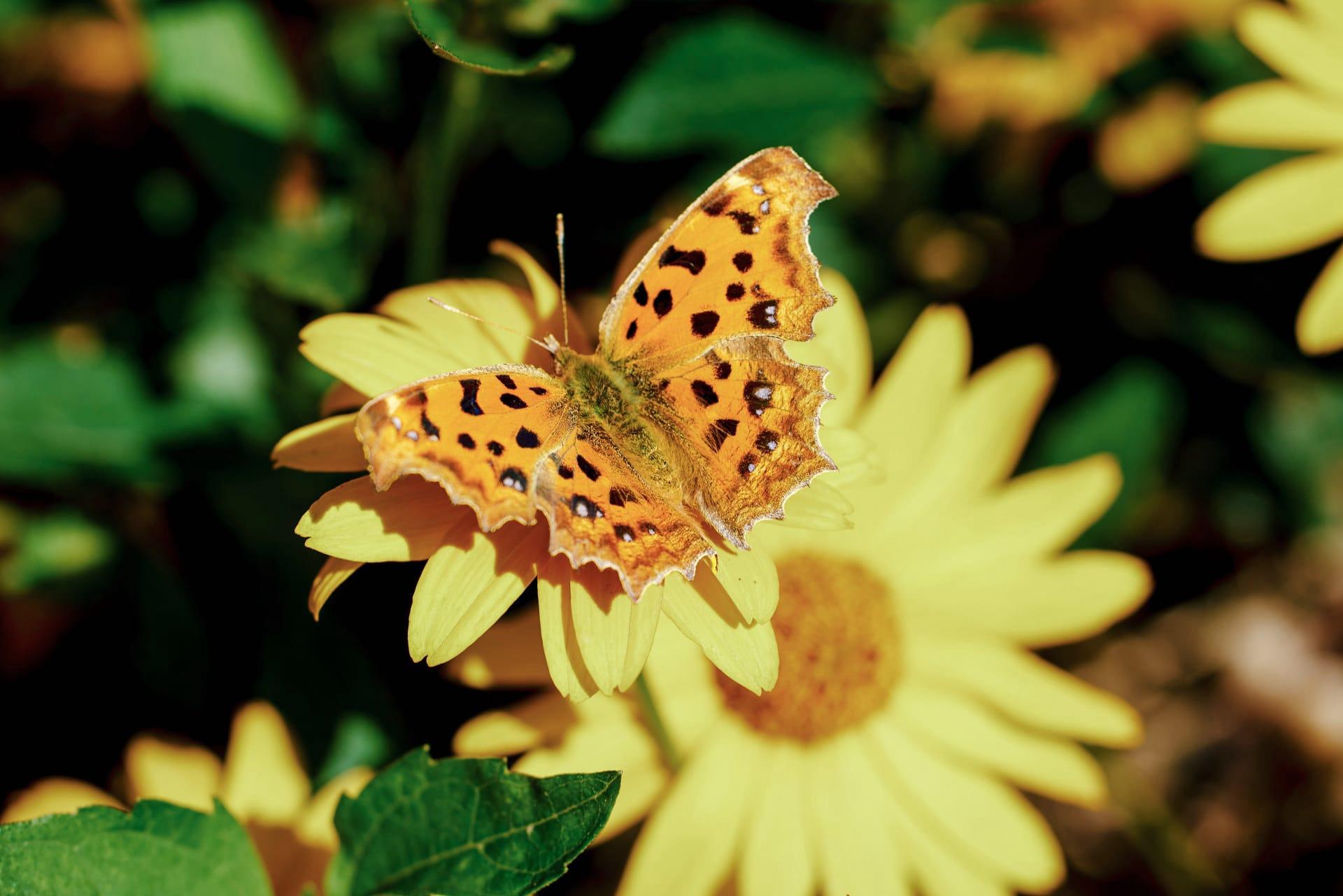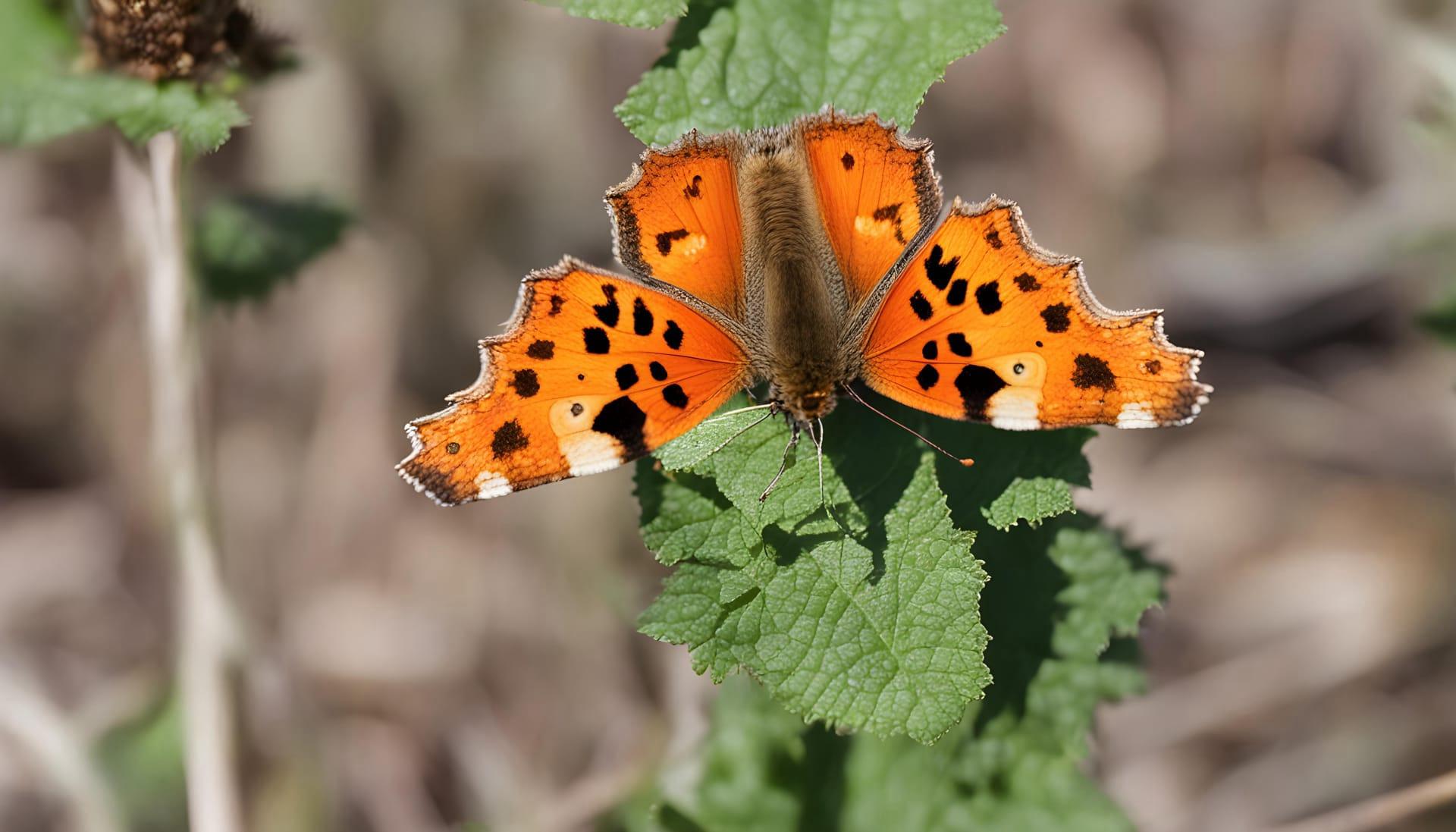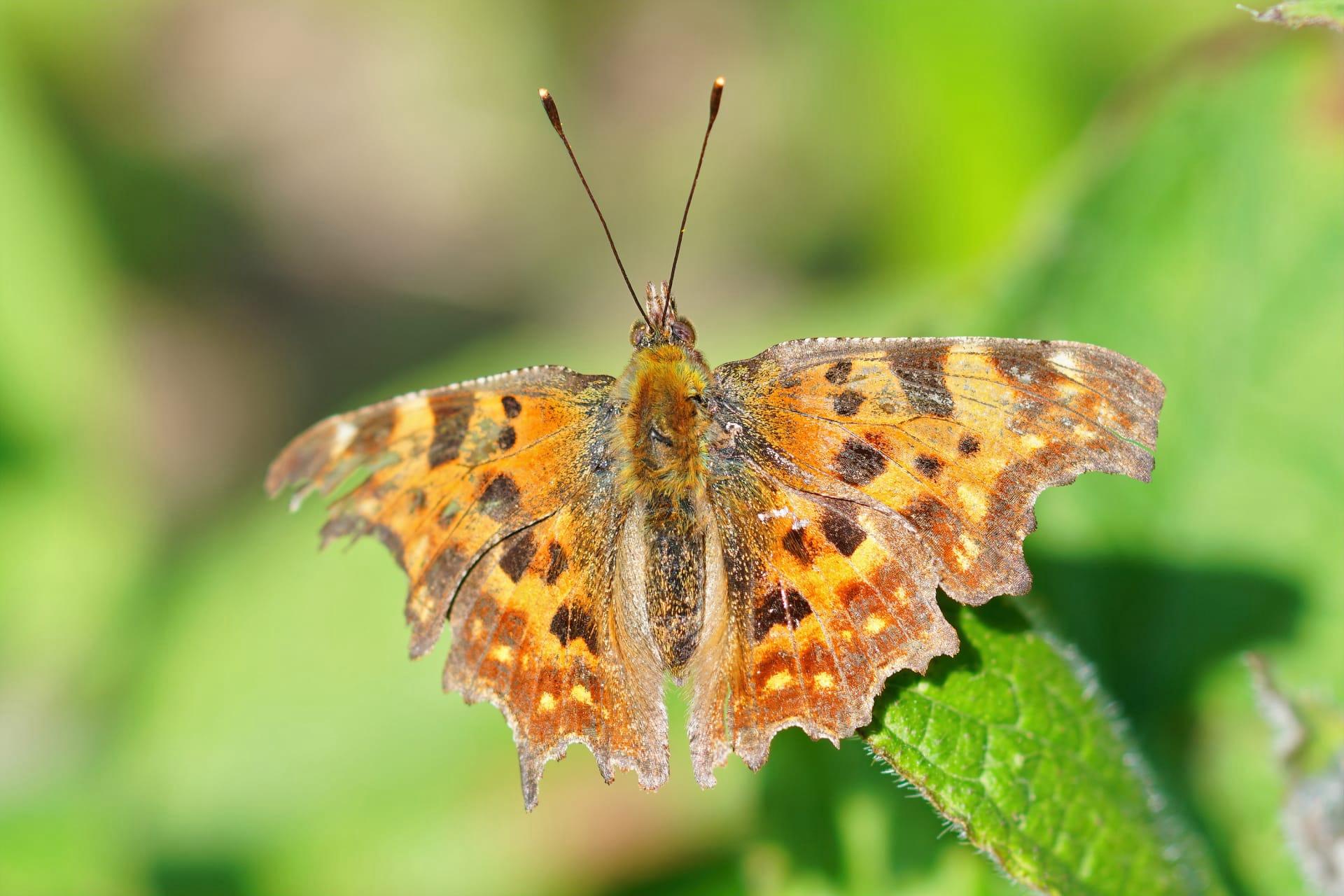Comma Butterfly Characteristics
- Home /
- Mini Encyclopedia /
- Animal /
- Comma Butterfly Characteristics
1
The Comma Butterfly, or Polygonia c-album, flaunts a distinctive wing shape, with jagged edges resembling torn leaves. This clever mimicry helps it blend into its surroundings. Adult Comma Butterflies span approximately 2 to 2.4 inches (5 to 6 cm) in wingspan. Their lifespan varies, living for about 2 weeks as adults, but they can survive up to several months in their total lifecycle, considering their time as caterpillars and pupae. These butterflies showcase a rich orange and brown color palette, with intricate patterns that serve as camouflage.
One of the most remarkable features of the Comma Butterfly is its proboscis - a unique, coiled straw-like organ used for feeding. This specialized structure can uncoil to sip nectar from flowers, making it a critical tool for their survival. The proboscis's ability to retract when not in use helps the butterfly protect this vital organ while navigating through various habitats.

2
Question: What distinguishes the Comma Butterfly's eggs from those of other butterflies?
Answer: The eggs of the Comma Butterfly are remarkable for their distinct barrel shape and pale green color. Laid singly on the underside of host plant leaves, these eggs are about 1 mm in diameter. This unique shape and placement strategy help protect the eggs from predators and environmental factors, ensuring a higher survival rate for the next generation of these fascinating creatures.

3
The Comma Butterfly exhibits a unique flight pattern, characterized by a series of rapid wing beats followed by sudden, gliding pauses. This erratic movement makes it difficult for predators to predict their path, enhancing their survival chances. During flight, they can reach speeds of up to 12 miles per hour (19 km/h), allowing them to cover significant distances when searching for food or mates.
When it comes to feeding, Comma Butterflies are primarily nectar feeders, visiting a variety of flowers to consume nectar. They are particularly attracted to purple, pink, and white flowers. Their long, flexible proboscises enable them to feed on nectar from flowers of various shapes and sizes. In addition to nectar, they also feed on overripe fruits and tree sap, adapting their diet to the availability of food sources in their environment.

4
Comma Butterflies are typically found in temperate regions, especially in woodland edges, hedgerows, and gardens. They prefer areas with a mix of trees and open spaces, allowing them access to both sunlight and shelter. The availability of nettles, elm, and hop plants is crucial, as these serve as the primary food source for their caterpillars. Their habitat range covers Europe, North Africa, and temperate regions of Asia.
In terms of reproduction, Comma Butterflies lay their eggs on the leaves of their preferred host plants. The caterpillars, once hatched, exhibit a striking resemblance to bird droppings, providing them with a natural camouflage against predators. After completing their growth, they form chrysalises, often attached to plant stems or under leaves. The transformation into adult butterflies takes about two weeks, after which they emerge to continue the cycle of life.

5
Book: "Butterflies of Britain & Ireland" by Jeremy Thomas and Richard Lewington. This comprehensive guide, published in the UK, details the diverse species of butterflies found across Britain and Ireland, including the Comma Butterfly. The authors, experts in their field, provide insights into the life cycles, habitats, and conservation of these insects, making it an invaluable resource for enthusiasts and researchers alike.
Book: "The Butterfly Isles" by Patrick Barkham. This book, authored by British journalist Patrick Barkham, narrates a personal journey through the UK in search of all native butterfly species, including the Comma Butterfly. Published in the 21st century, it blends travelogue, natural history, and conservation, offering a unique perspective on these delicate creatures and their place in Britain's natural heritage.